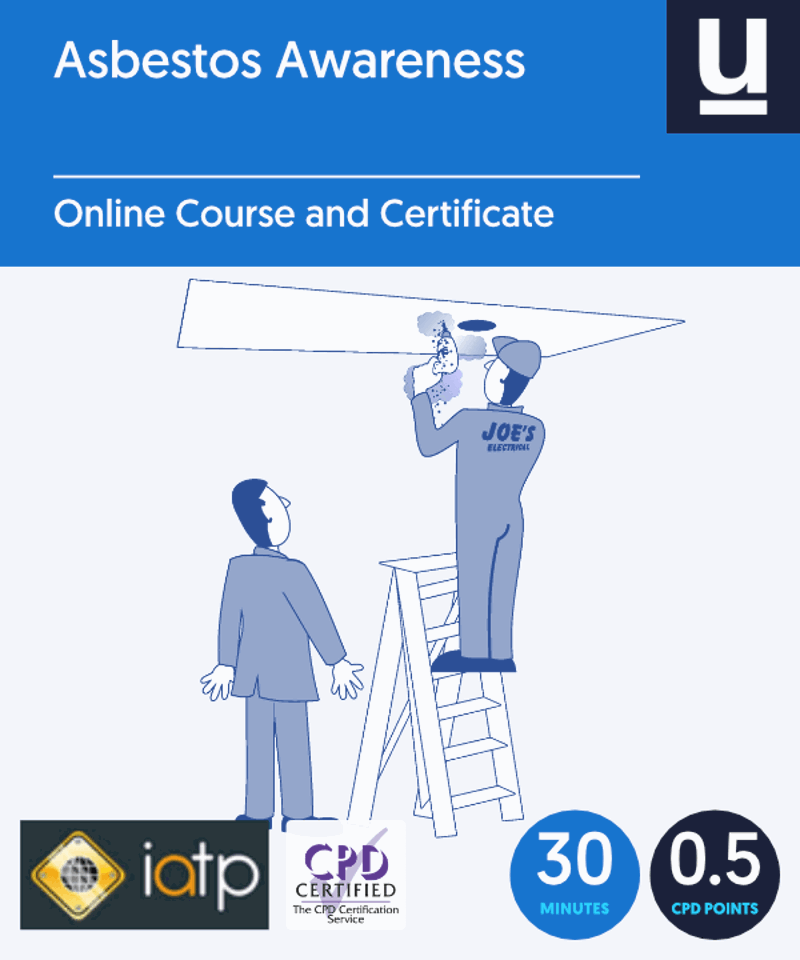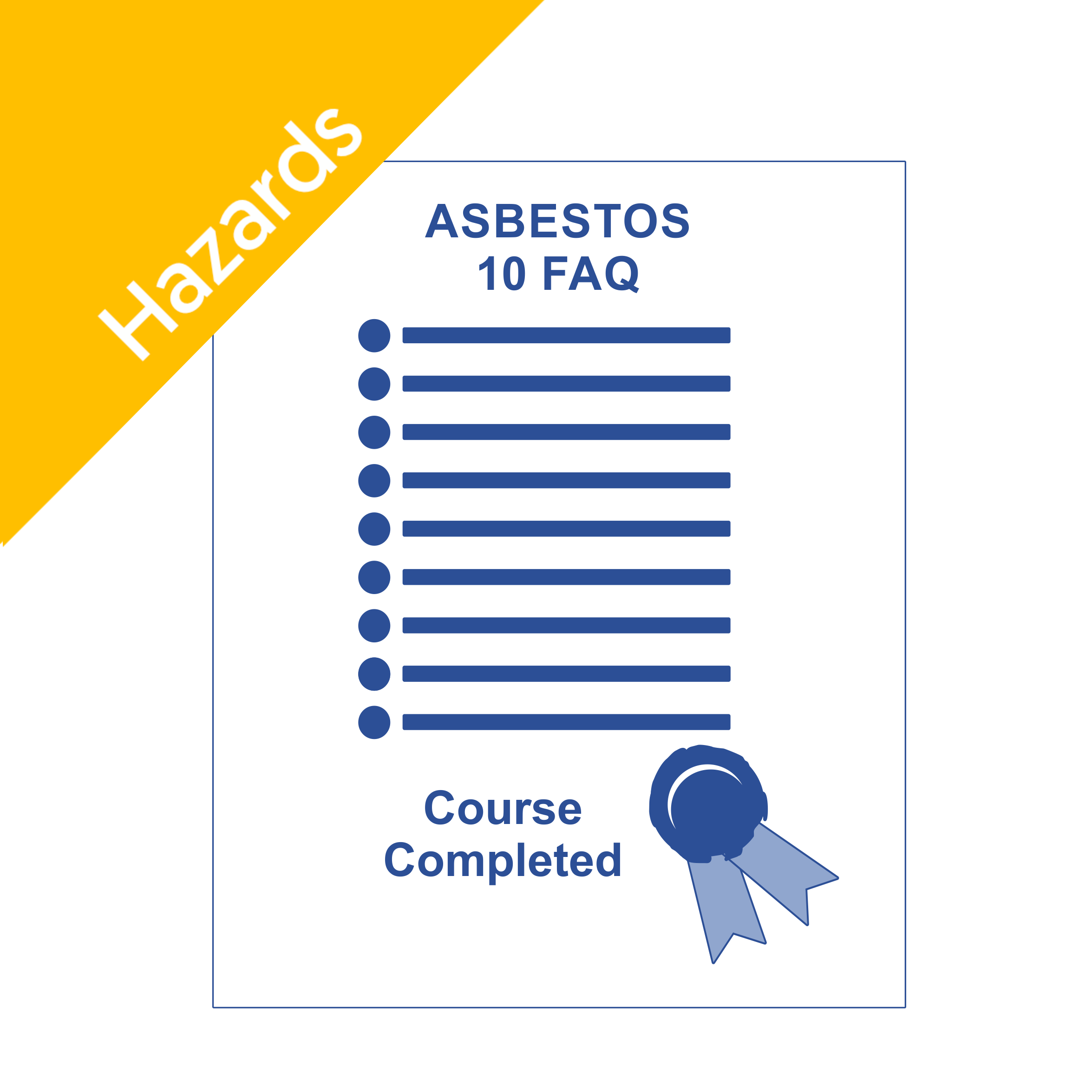3. What Does an Asbestos Tile Look Like?
Tiles containing asbestos were commonly used between 1920 and 1960. To view some example images of these tiles, click here to open the HSE's asbestos image gallery.
It is challenging to tell if a tile contains asbestos from sight alone. Instead, if you suspect your tiling contains asbestos, a sample should be taken and sent to be tested appropriately before proceeding. For more information on removing asbestos, check out our FAQs on asbestos removal article.
4. Where Does Asbestos Come From?
Asbestos comprises six naturally occurring silicate minerals with a thin fibrous crystal structure. These minerals are:
- Chrysotile
- Amosite
- Crocidolite
- Tremolite
- Anthophyllite
- Actinolite
Asbestos is formed in the earth's mantle when a hot magnesium-rich rock, such as peridotite, reacts with water. When this happens, it creates several hydrated magnesium silicates, including asbestos, that can be mined.
At its peak, asbestos was mined at a rate of around 4.8 million tonnes per year, and, despite its well-documented dangers, it is still mined at a rate of about 1.1 million tonnes per year.
5. What is Asbestos Poisoning?
Asbestos consists of many tiny mineral fibres. When disturbed, these fibres can split into smaller and thinner fibres, eventually becoming microscopic.
If a person inhales asbestos fibres, these can end up in the lungs or blood. This exposure increases a person's risk of developing potentially fatal diseases, including:
- Mesothelioma (which is always fatal).
- Lung cancer (which is usually fatal).
- Asbestosis (which is often fatal).
- Pleural thickening 'plaques' (which is not fatal).
Asbestos poisoning and exposure are significant problems, with the Health and Safety Executive (HSE) website stating that there are 'over 5,000 asbestos-related disease deaths per year currently'.
6. When Was Asbestos Banned?
The import and use of asbestos has been illegal in the UK since the late 20th century. More specifically, blue and brown asbestos (amosite and crocidolite asbestos) was banned in 1985, and white asbestos (chrysotile asbestos) was banned in 1999.
In the years since the bans, several pieces of legislation have been set out to protect those around or working with asbestos. The most recent of these is the Control of Asbestos Regulations 2012.
7. Why is Asbestos Dangerous?
As previously mentioned, asbestos consists of microscopic mineral fibres that can cause fatal diseases if inhaled. It was used in many materials and can often be found in buildings built before 2000.
All of this means that those who work on buildings are likely to be exposed to asbestos-containing materials, increasing the already-significant dangers associated with it.
It is important to note that some asbestos-containing materials (ACMs) are more dangerous than others. These ACMs are 'friable':
Friable materials are quickly reduced to powder when dry, which allows them to release fibres more easily into the air. Some examples of friable ACMs include spray coatings, thermal lagging and ceiling tiles.
In contrast, non-friable materials feature asbestos that is firmly bound in the matrix of the material. They are unlikely to release measurable amounts of asbestos fibres if left undisturbed. Some examples of non-friable ACMs include asbestos cement roof sheets, vinyl floor tiles and plastic moulded toilet cisterns.
8. When was Asbestos First Used?
Asbestos has been used for over 4,500 years and is found in prehistoric cooking pots and the cloths of embalmed pharaohs. However, its use increased during the 1800s as the many benefits of asbestos were discovered, including:
- Heat-resistant properties, making it useful for insulation and braking systems.
- Fire resistance, which is helpful for cement products and fibre boards.
- Electrical resistance, making it a good insulator for electrical appliances.
- High tensile strength, which made it ideal for adding strength to cement and plastics.
- Sound absorbance, which led to its use in acoustic sound insulation.
Asbestos consumption in the United States peaked at 804,000 tons in 1973, with the worldwide demand peaking four years later in 1977, even though the dangers of asbestos have been well known since 1924.
9. How do I tell the Difference Between Cellulose and Asbestos insulation?
Cellulose is a material that is often used in insulation products in place of asbestos. It is made of recycled paper products, such as newspaper and cardboard boxes, which have been shredded and turned into fibres.
Cellulose insulation looks very similar to asbestos insulation, with the main difference being that asbestos insulation often looks slightly browner compared to cellulose insulation, which is usually slightly greyer.
However, if you suspect your insulation contains asbestos, you should not disturb it or inspect it yourself. Instead, call a professional who can check the insulation and, if necessary, take a sample to be tested. They should also be able to discuss the best approach to take with you if your insulation does contain asbestos.
10. How to Test for Airbourne Asbestos
If you suspect that asbestos is present and has been disturbed or damaged, you will likely wonder if the air contains asbestos particulate matter. There are different degrees of air tests, and the appropriate test for your situation will depend on the age of the building, the suspected type of asbestos present, and any further works planned.
Only a UKAS-accredited contractor can carry out asbestos air testing.
Asbestos is highly dangerous, and everyone who is likely to come into contact with it must be suitably trained.
At Commodious, we offer an IATP-approved asbestos awareness course and certificate for just £10 +VAT.












